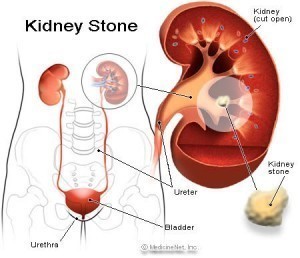Kidney Size
Known as the paired organs that are responsible  for the production of urine, the kidneys are important to the basic and secondary functions of the urinary system. Some of the functions of these parts are the acid-base balance, the regulation of electrolytes as well as the regulation of the blood pressure. In addition to these, the kidneys are essential to hormone production like renin and vitamin D. The kidney size increases through time and until a person reaches maturation. To know more about the average size of this body part, below are some information that can help us assess the average dimensions of kidneys.
for the production of urine, the kidneys are important to the basic and secondary functions of the urinary system. Some of the functions of these parts are the acid-base balance, the regulation of electrolytes as well as the regulation of the blood pressure. In addition to these, the kidneys are essential to hormone production like renin and vitamin D. The kidney size increases through time and until a person reaches maturation. To know more about the average size of this body part, below are some information that can help us assess the average dimensions of kidneys.
The Size of the Kidney
What is the average kidney size? The development or increase in the size of this organ stops at the age of 25 or 26. When the kidney stops to increase in size, the average length usually reaches 12 centimeters while the breadth is approximately 6 centimeters. The mean thickness of this body part is around 3 centimeters. The mean weight of a kidney is 120 grams to 150 grams. With these dimensions, any decrease in the kidney size is abnormal. However, the size of a kidney can still grow after maturation. This can happen if one of the kidneys was removed. The remaining kidney increases to compensate the functions of the other kidney.
The normal size of the kidney is the human fist size. There are some factors that can affect the abnormal growth in size. One of the factors is the growth or development of cysts in the organ. When cysts start to develop, the kidney can grow as big as a football. In addition, the weight can reach 38 pounds.
Another factor that affects the size of the body part is gender. The kidney size of females is usually smaller than males. Moreover, regardless of gender, the left kidney is larger than the right kidney. A decrease in the size can be caused by decreased level of blood supply.
Additional Facts and Other Interesting Details
Aside from gender, age and race, the kidney size can also be affected by the presence of some diseases or illnesses. Examples of diseases that can affect the size of the organ are the multicystic dysplastic kidney, renal dysplasia, renal agenesis, lupus nephritis and minimal change disease. In addition to these, acquired illnesses like diabetic nephrophaty, glomerulonephritis, interstitial nephritis, renal cell carcinoma and Wilms tumor also have effects on the dimensions of this body part.





